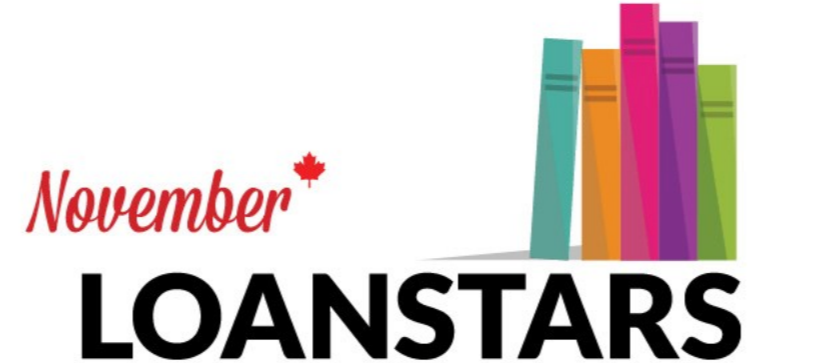This code list release is exceptional and merits a closer-than-usual review:
ONIX codelist 196 for Accessibility (Used in Product Form Feature, associated with code 09) has a major expansion in order to ensure that the Schema.org version used in EPUBs matches the ONIX list and deserves a close review by anyone creating accessible EPUB files. Note that full revisions to the W3C crosswalk between the two code lists have not been completed but the most current working version reflects new code values.
Coding is being developed for Carbon Capture (Used in Product Form Feature, see new code 79 codes below and associated code list 262). Note that the coding described here is for product-level information and that there is existing support to provide a link to a publisher webpage where their corporate details can be provided.
We are always seeking feedback on these, and any code lists. Please send your questions and comments to standards@booknetcanada.ca.
Codelist Issue 62 for ONIX 3.0 has been released.* Complete listings of the ONIX codelists can be downloaded from the EDItEUR website.
Issue 62 stand-alone codelist documentation as a readable PDF or HTML file (open and read it in your web browser)
Issue 62 TXT, CSV, XML, JSON files for loading into your data management applications
Issue 62 XSD, RNG, DTD schema modules for use with existing XML schema files (but note that it's better to download the latest 3.0.8 schemas since they incorporate a couple of small improvements as well as the new Block 8)
The ‘strict’ XSD 1.1 with Issue 62 (the strict XSD must be updated each time there is a new issue of the codelists, as It includes some codelists within the XSD itself)
The online browser for the ONIX code lists at ns.editeur.org/onix has been updated to issue 62
Need help finding and using the documentation? Read this.
It should go without saying that everyone should review the document summarizing the changes and update their systems, but we've highlighted some changes of particular note for you below.
List 17 Contributor role code
Code E11 has been added to reflect an introduction read by the reader of recorded introduction (or other “front matter”) in an audiobook.
List 19 Unnamed person(s)
Code 09 has been added to be used when the creation of book content, for example, the creation of text, images, etc., is accomplished via a generative AI model or technique. Note, this code would typically be combined with the role “assisted by.”
About the Unnamed person codes:
They’re often forgotten but List 19 supports a dedicated code list to identify various types of “unnamed persons”. See the codes' notes to differentiate “anonymous” from “various” from “et al.” and so on. Some codes from this list are also used to preserve “key name” and “person name” entries for named people. This list already supports a type of AI by providing synthetic voice options.
EDItEUR has provided the following example of a book where the illustrator used AI-generated imagery as the basis for their work:
<Contributor>
<SequenceNumber>1</SequenceNumber>
<ContributorRole>A01</ContributorRole>
where role code A01 indicates authored by
<PersonName>James Green</PersonName>
</Contributor>
<Contributor>
<SequenceNumber>2</SequenceNumber>
<ContributorRole>A12</ContributorRole>
where role code A12 indicates illustrated by
<PersonName>Fiona Brown</PersonName>
</Contributor>
<Contributor>
<SequenceNumber>3</SequenceNumber>
<ContributorRole>Z01</ContributorRole>
where role code Z01 indicates assisted by
<UnnamedPersons>09</UnnamedPersons>
where code 09 indicates AI (Artificial intelligence)
</Contributor>
List 21 Edition type
Code BUD has been added to indicate a budget edition, a product sold at a lower price than other editions, usually with lower-quality paper or binding to reduce production costs.
List 30 Audience range qualifier and List 31 Audience range precision
Some clarifications have been added to reduce confusion.
For list 30, audience range qualifier, code 16 (interest age in months) is now accompanied by the note that it should not be used when an Audience range with qualifier code 17 is present. Recall that audience range qualifier code 17 refers to interest age in years; therefore EDItEUR is mandating the use of months or years, not both.
Moreover, list 31 audience range precision has seen clarification added to define how to use codes 01, 03, and 04, to avoid confusion:
Code 01, exact, may only be used in Audience range precision (1), and when no Audience range precision (2) is present.
Code 03, from, may only be used in Audience range precision (1).
Code 04, to, may be used in Audience range precision (1) when no Audience range precision (2) is present, or in Audience range precision (2) when Audience range precision (1) is code 03.
List 79 Product form feature type
A large selection of codes has been added to reflect Carbon/GHG emission certification schemes at the product level (not company-wide initiatives the publisher may have taken on, for example). Refer to the codelist for complete documentation for the following newly-added codes:
Code 41 Carbon/GHG emission certification scheme and part (Use Code List 262 below)
Code 42 Carbon/GHG emission certification / license number (Use Code List 262 below)
Code 43 Carbon/GHG emission certification URL (Use Code List 262 below)
Code 44 Carbon/GHG Scope 3 Carbon dioxide equivalent emission (Use Code List 262 below)
Code 45 Carbon/GHG Scope 2 Carbon dioxide equivalent emission
Code 46 Carbon/GHG Scope 1 Carbon dioxide equivalent emission
List 262 Carbon/GHG emissions certification scheme
Akin to the addition of several codes under list 79, product form feature type, list 262 adds codes for emissions certification schemes, including:
101 Blue Angel Product
102 Cradle to Cradle
103 Nordic Swan
104 Klimaneutral
105 EU Ecolabel
501 Vlabel
According to EDItEUR, “this initial list of certification schemes is intended to support proof-of-concept work and initial development of functionality within IT systems. Other schemes will be added to this list in issue 63 and thereafter. The list is intended to cover schemes which apply to the product (rather than to an organization), and most of these schemes will allow for a logo to be printed on the book. Many have certification numbers or license numbers that can be used to verify the certification status, and some provide methodologies for calculating the emissions of greenhouse gases on a per-copy basis.”
Expect List 262 to grow and if you're using or planning on a scheme it would be good to stay on top of global certification schemes and their inclusion in EDItEUR’s lists.
List 81 Product content type
A large selection of codes has been added and modified/clarified to support codes that offer additional and often digital-specific options to describe contents. Note that these codes support digital products where it would be hard to know the contents in a file.
Given the large selection of codes added, please refer to review the document summarizing the changes for a complete list.
List 150 Product form
Fans of the ZA and ZX merchandise codes will be happy to see that these codes have been clarified to refer to “book accessories and non-book products” and “branded, promotional or tie-in” merchandise, respectively.
List 158 Resource content type
New code 49, image for social media, refers to an image a publisher may choose to provide that is intended to be used to support social media activities.
List 175 Product form detail
A large selection of interesting new format-related codes have been added, describing varied content, including:
Wordless books
Orientation of reading progression (although not likely to be used in our market, according to BookNet Canada’s Bibliographic Manager, Tom Richardson)
Digital page number / scrolling / progression
German calendar type differentiations
Audiobooks without background sound
As noted above, given the large selection of codes added, please refer to review the document summarizing the changes for a complete list.
List 196 E-publication accessibility details
This list sees perhaps the most additions in recent memory to a quarterly codelist release. As noted earlier, given the large selection of codes added, please refer to review the document summarizing the changes for a complete list.
These changes are brought forth to bring the code list in line with the Schema.org-based one used within EPUB formatted books, so this is extremely important, but uncontroversial. Publishing professionals involved in metadata creation are wise to connect with colleagues in the eproduction department to collaborate and implement the adoption of these codes.
Reminder: New lists added with ONIX 3.1 release
As we flagged in an earlier blog post, ONIX 3.1 has been released. And with it, two new codelists were introduced, which we are highlighting here: List 259 Collection frequency code and List 260 Epublication license date role. These are included on page five in the document summarizing the changes.
*A note to ONIX 2.1 users
ONIX 2.1 users should note that codelist updates no longer apply to ONIX 2.1 and users should continue to use Issue 36. ONIX 3.0 code lists and schema modules no longer contain codes or lists unique to ONIX 2.1. You can still obtain the correct ONIX 2.1 schema and codelists from the Archived Previous Releases page.
BookNet Canada still recommends that you use and periodically update your copy of EDItEUR's best practices guide. It’s an essential ONIX 3.0 guide, but much of the information in it applies equally to ONIX 2.1.














Help us create your new favourite feature by sharing your thoughts!